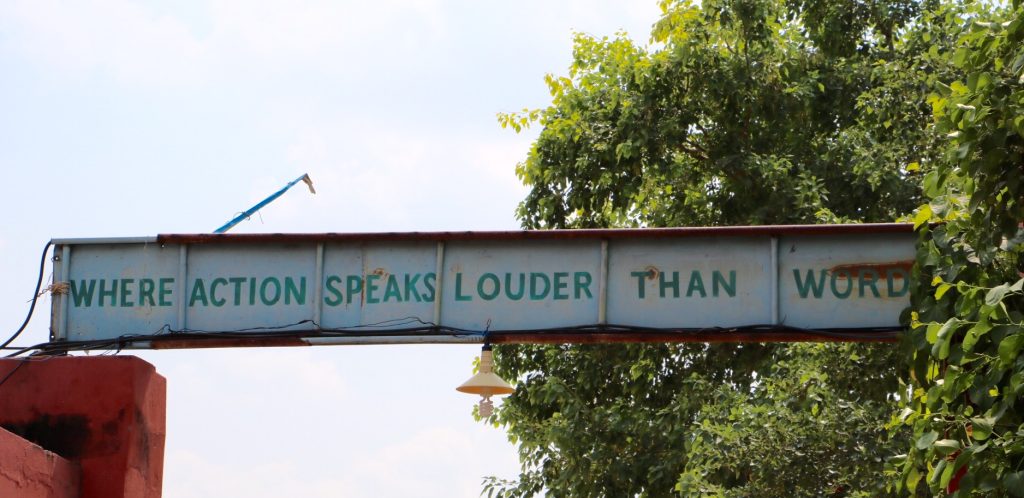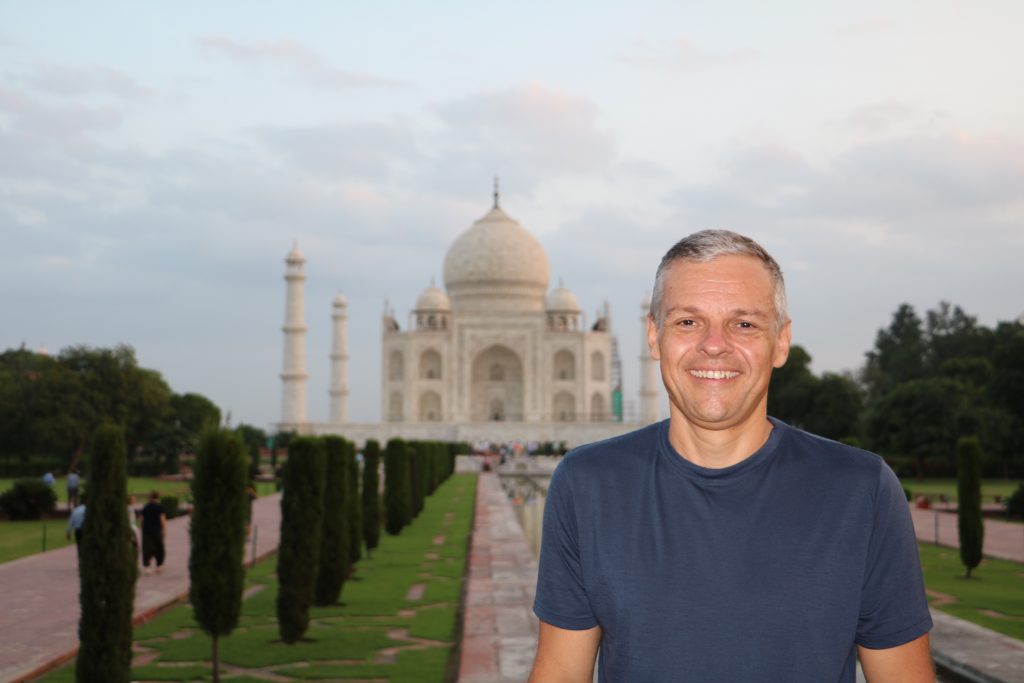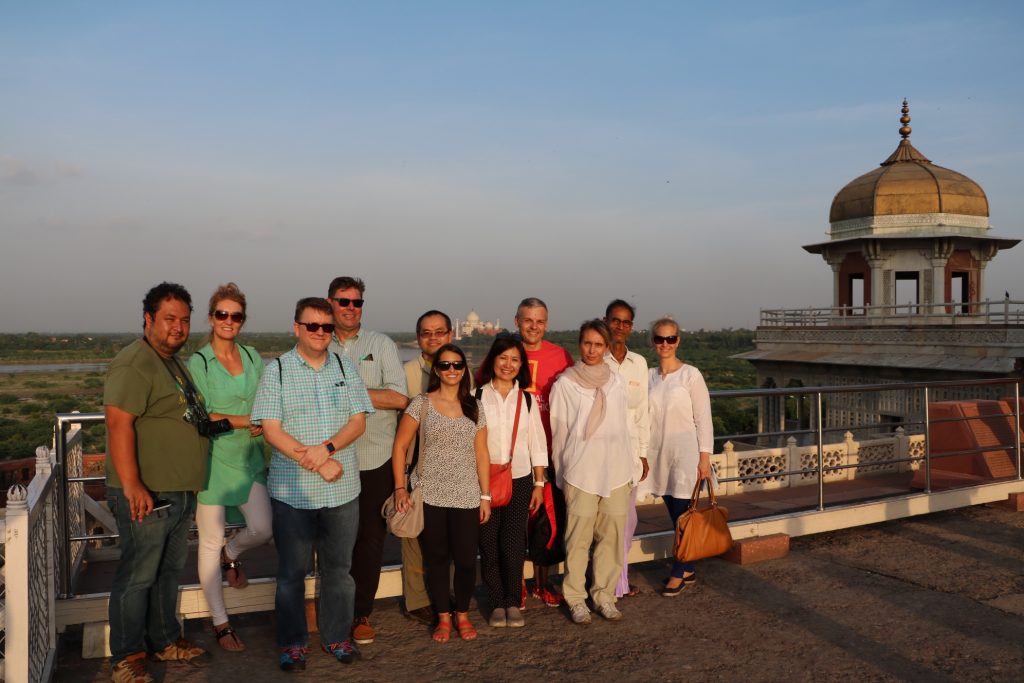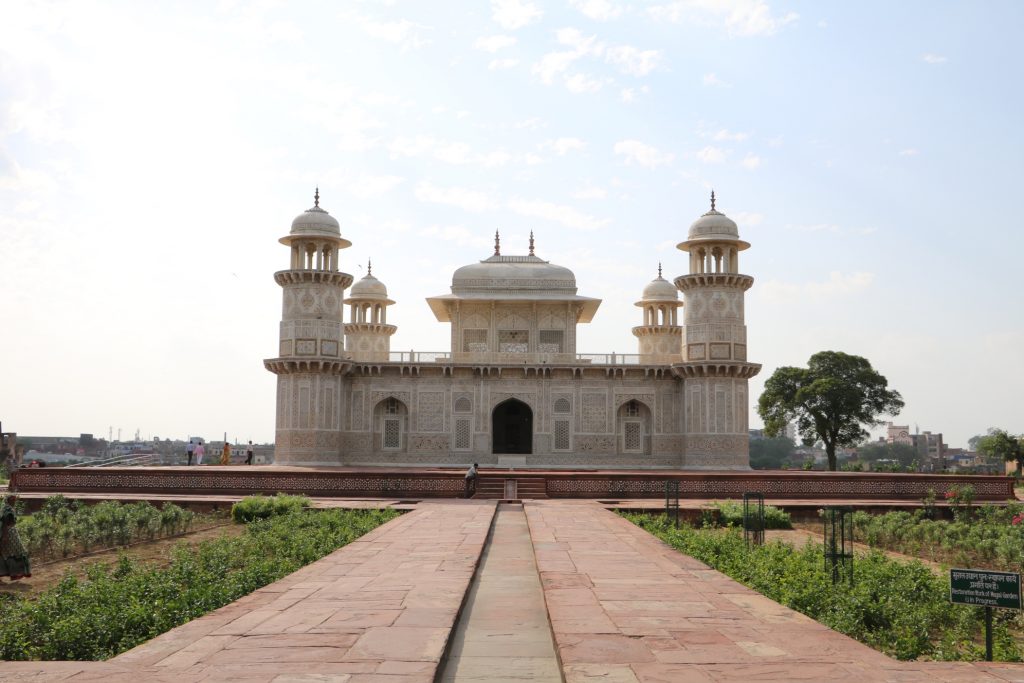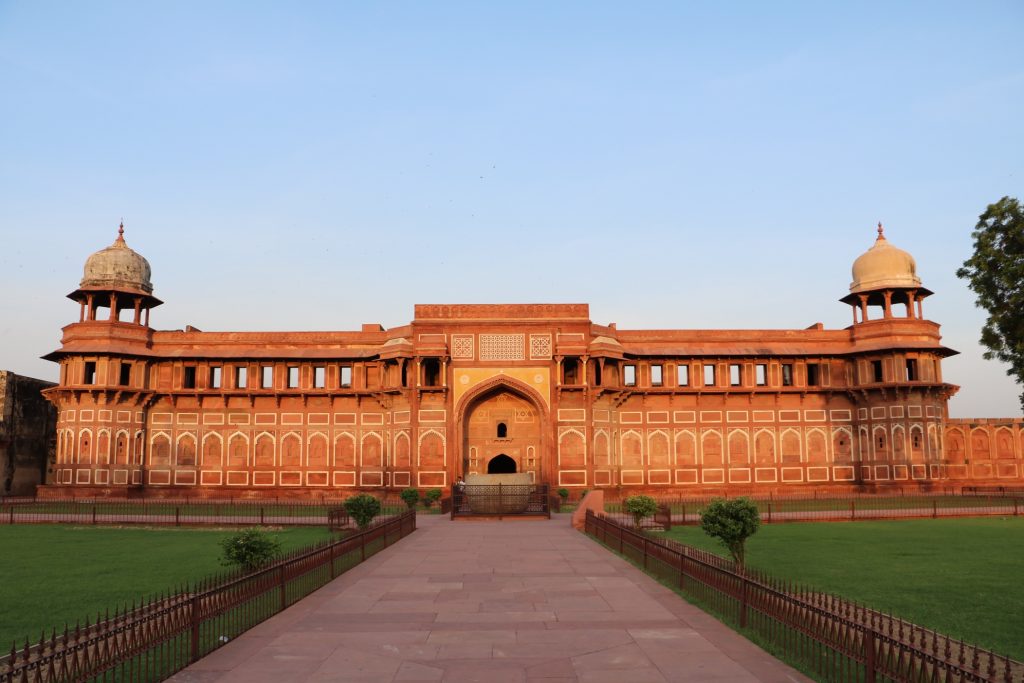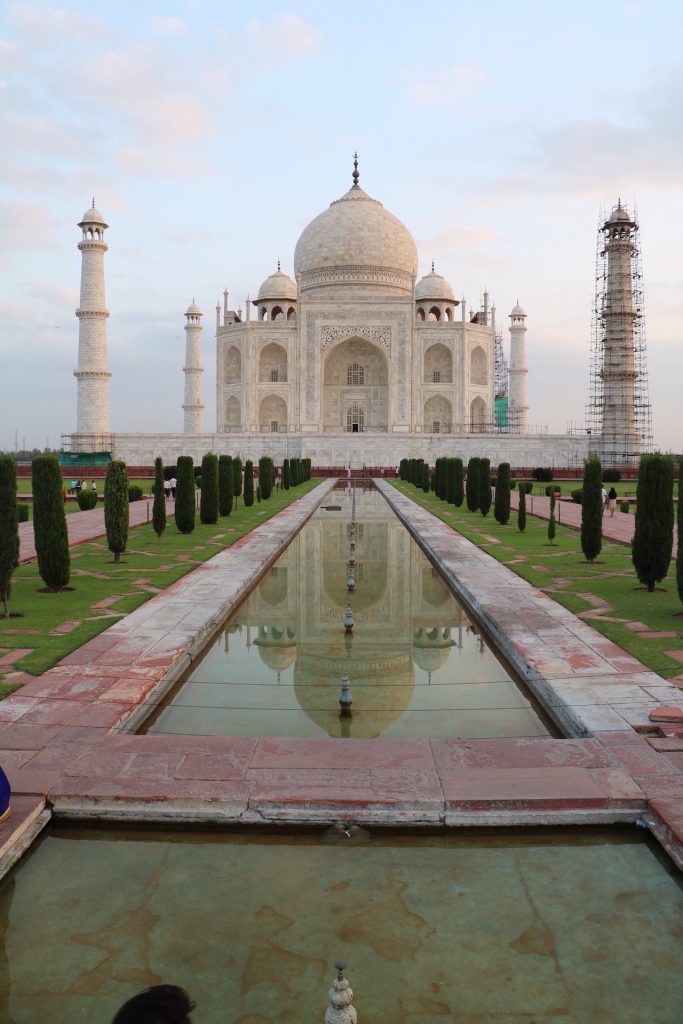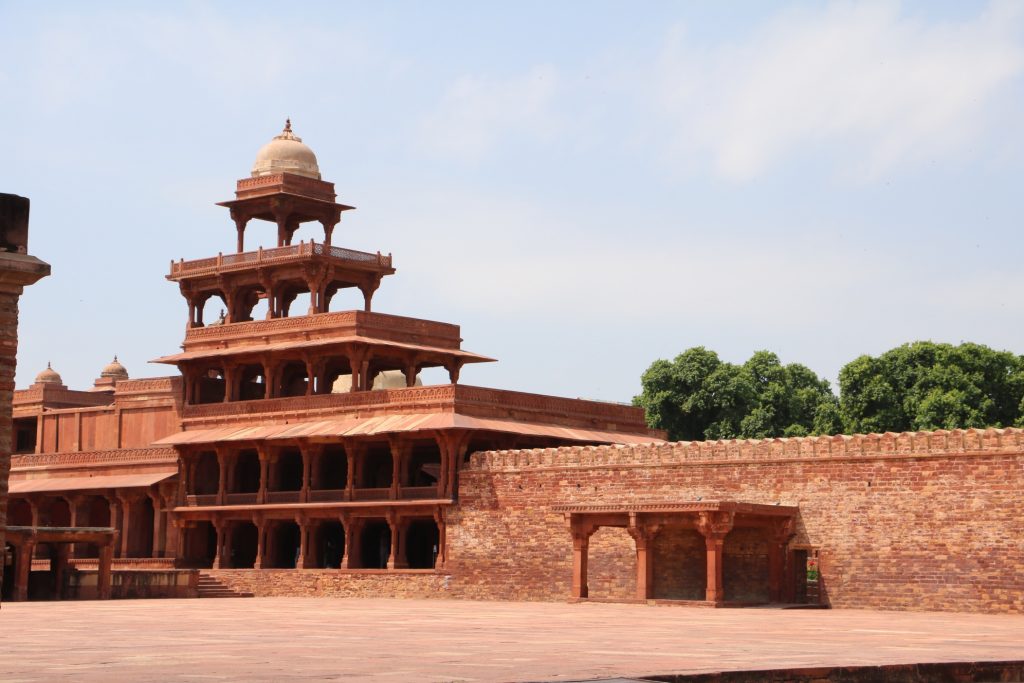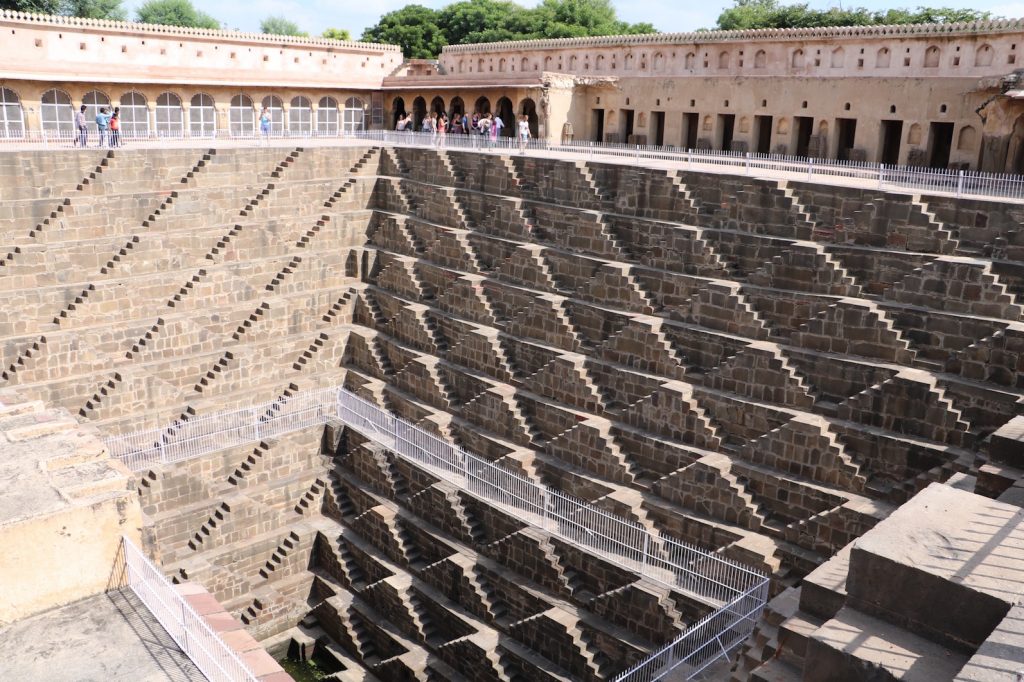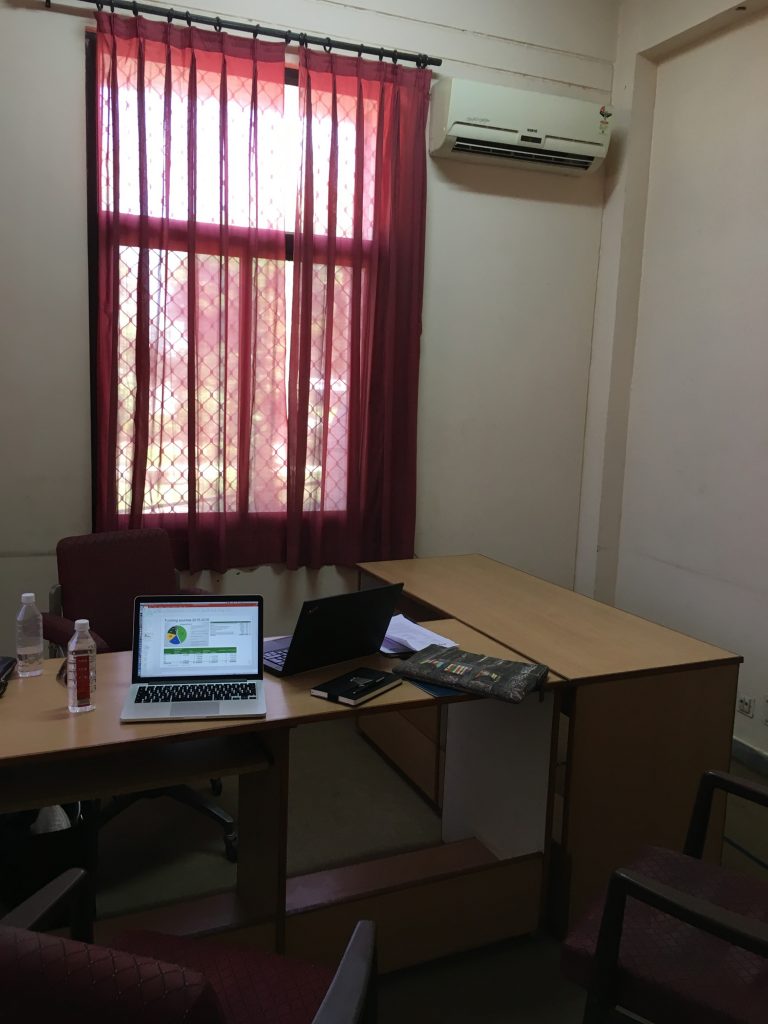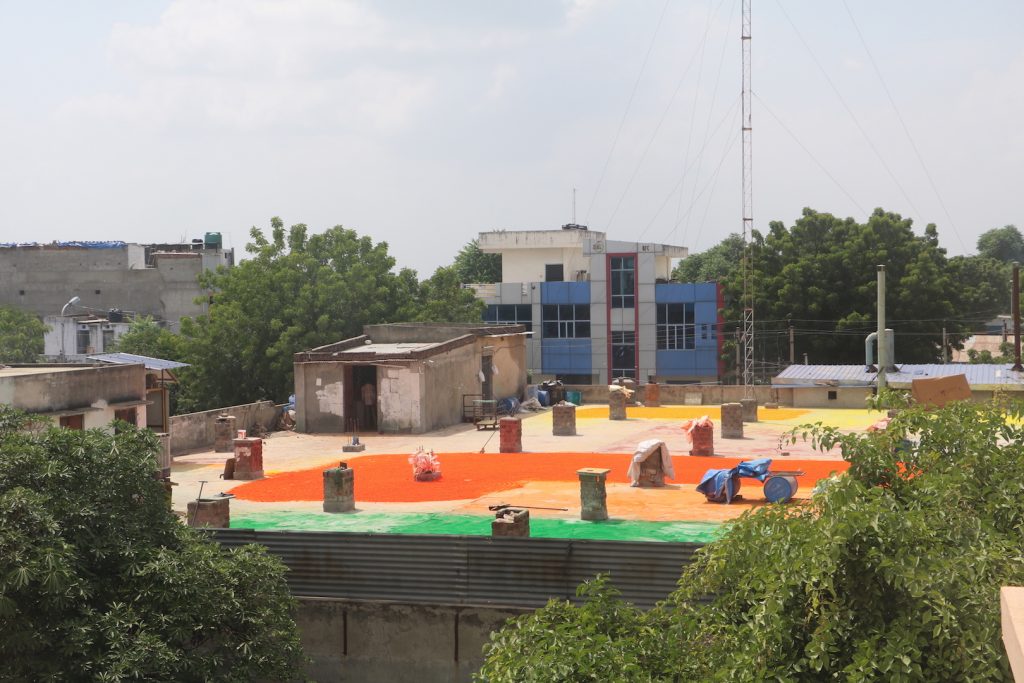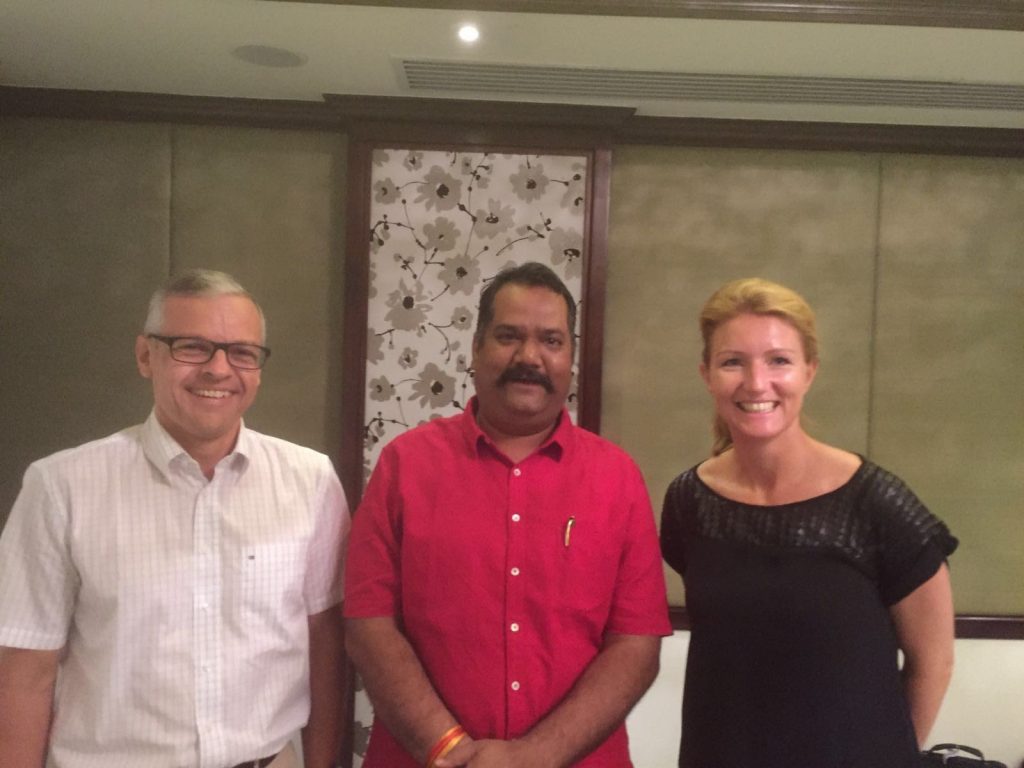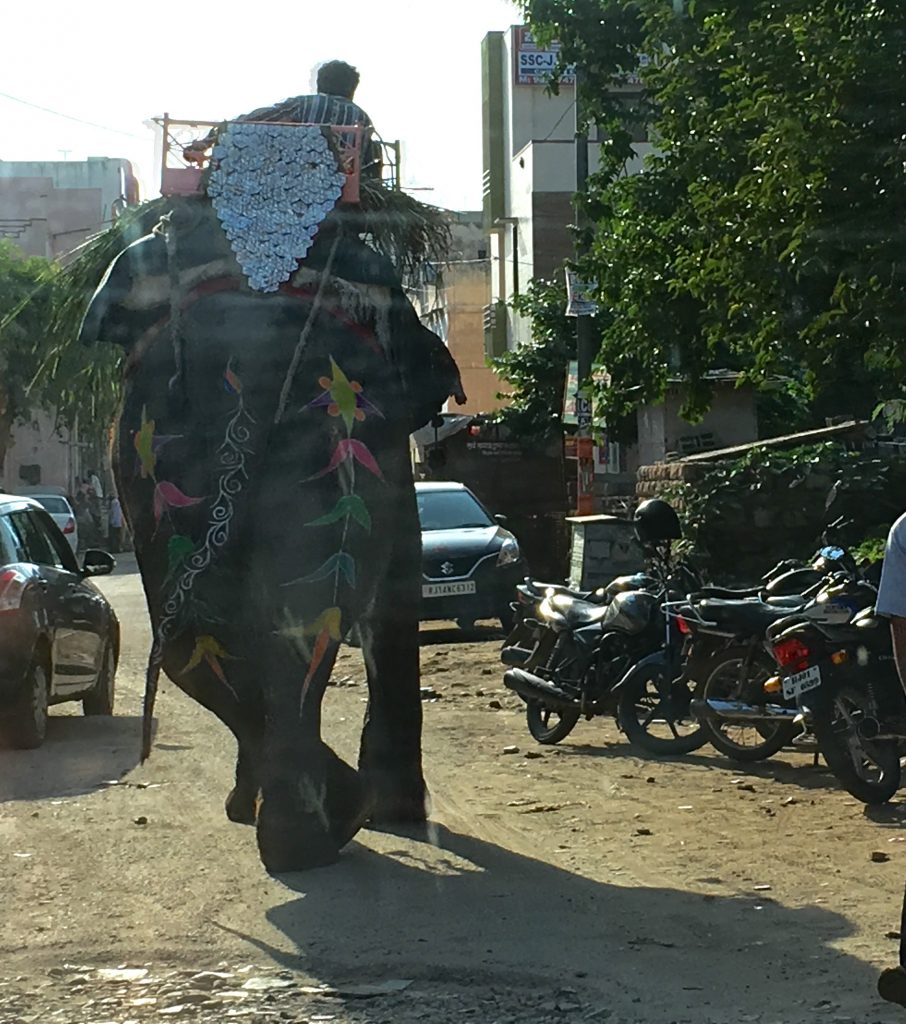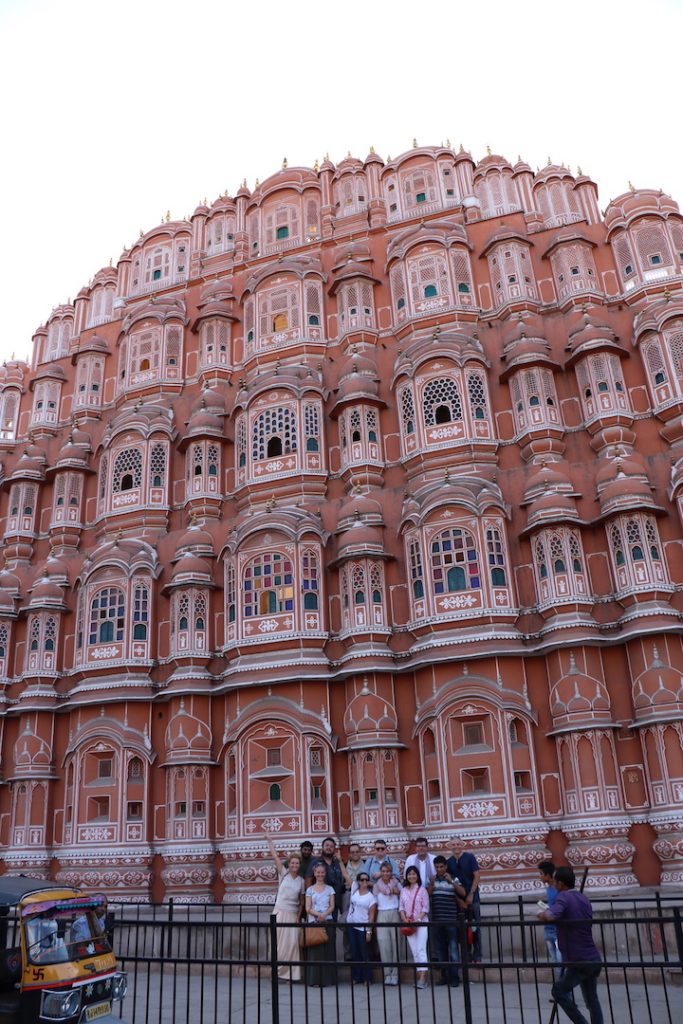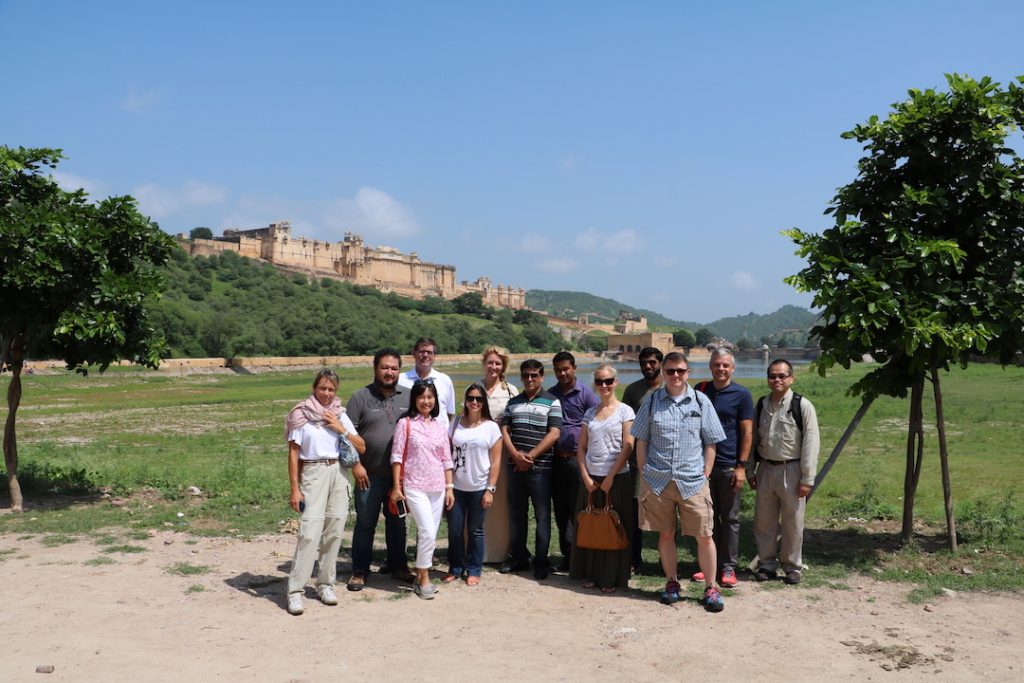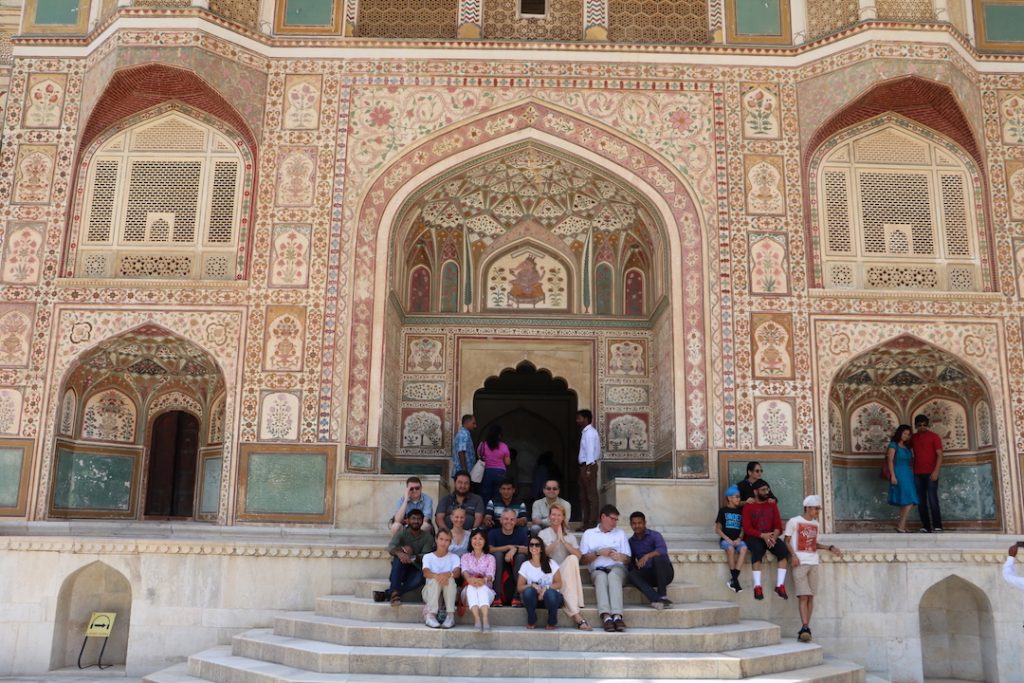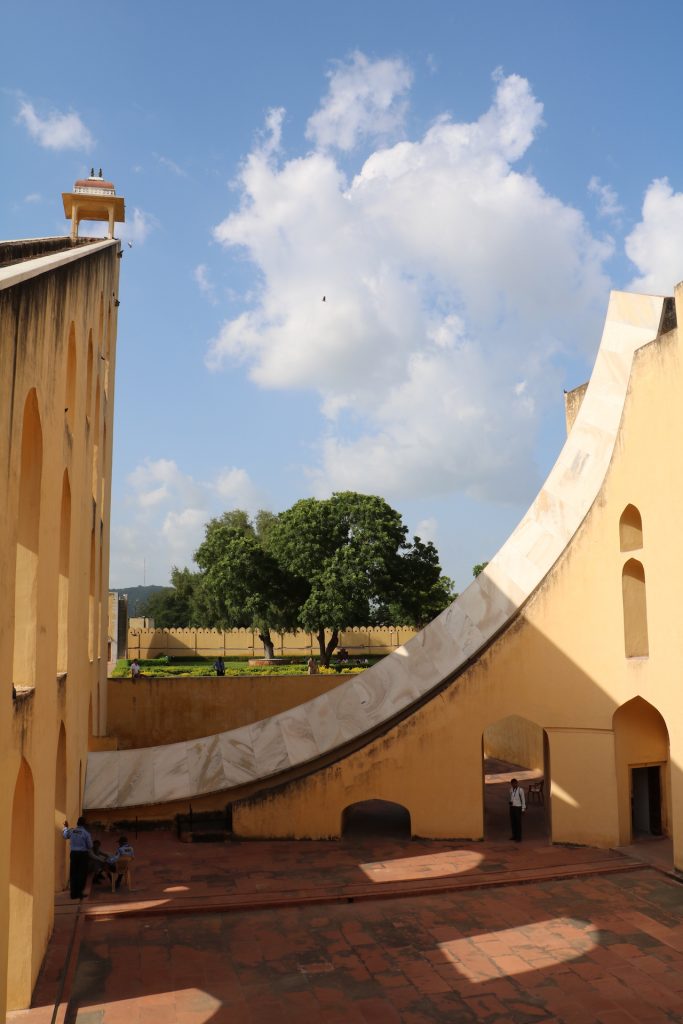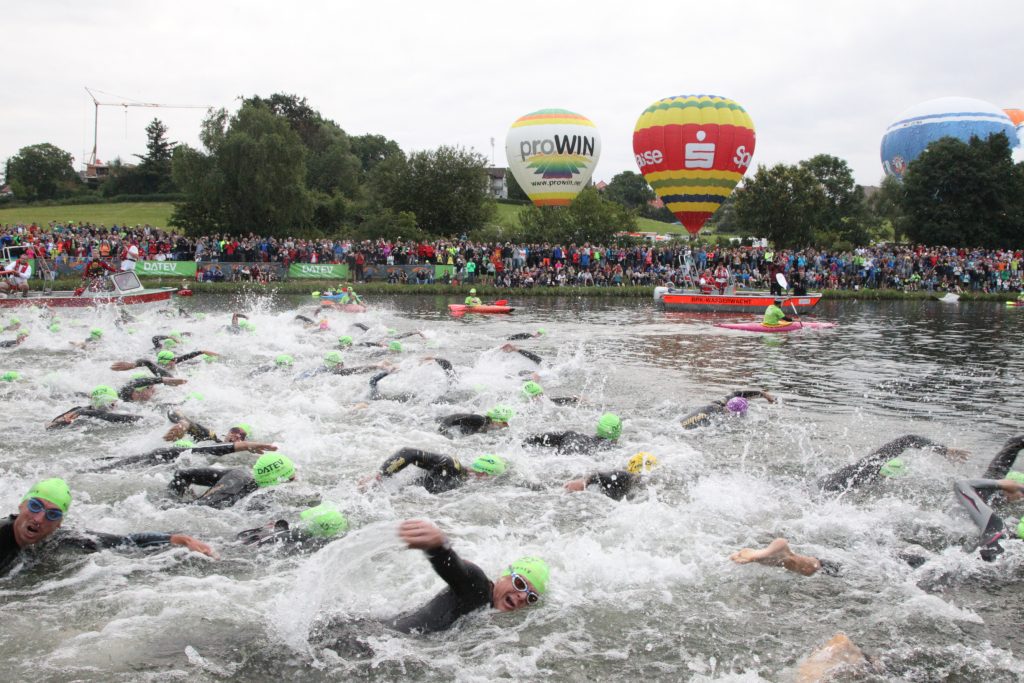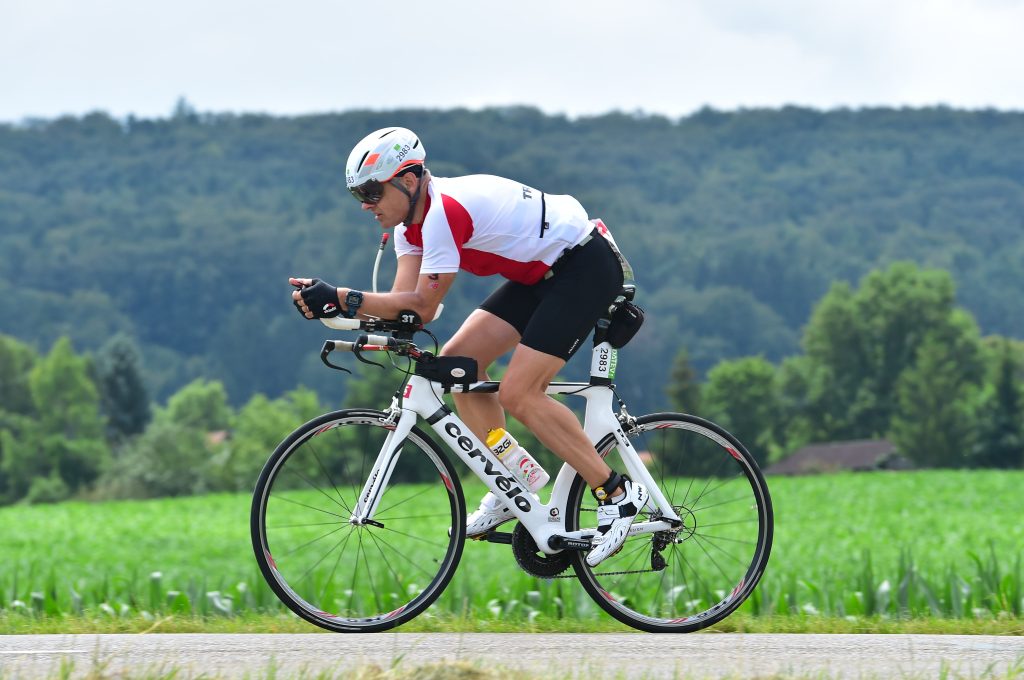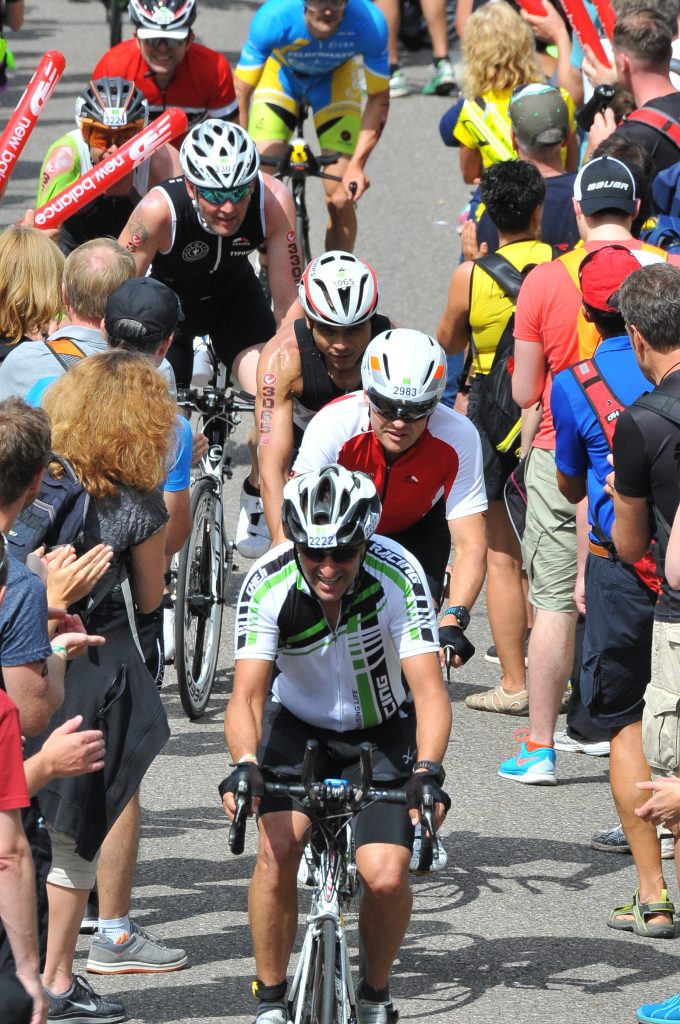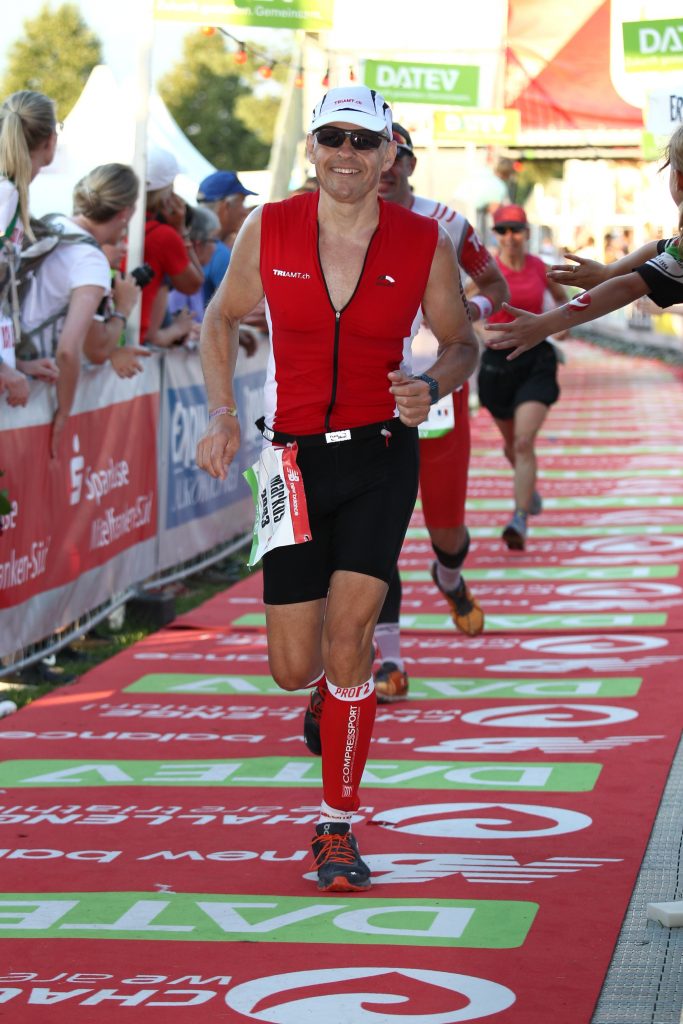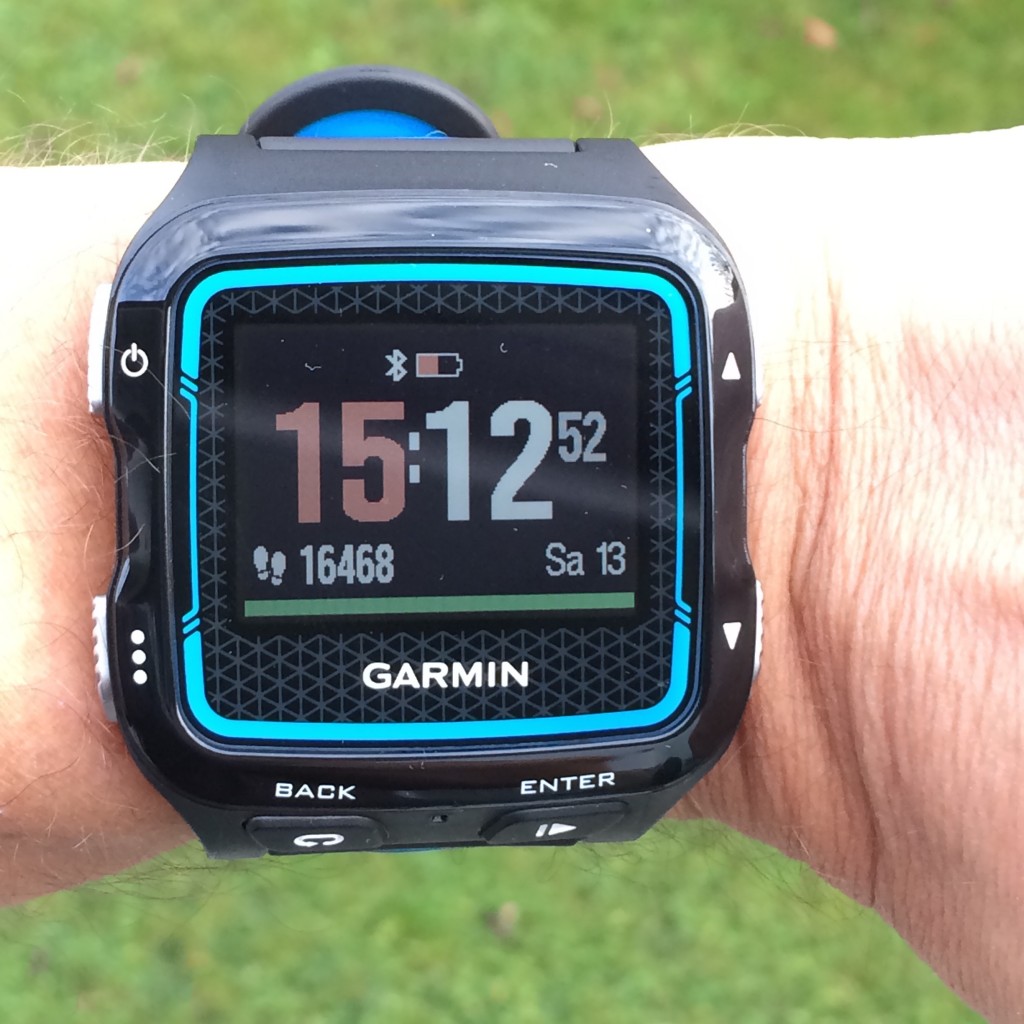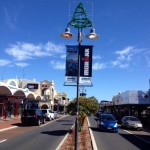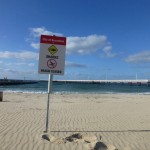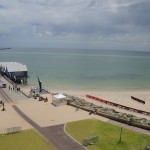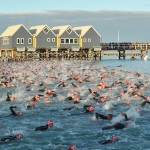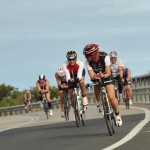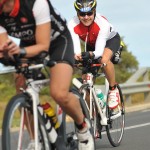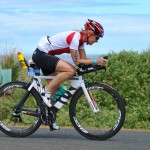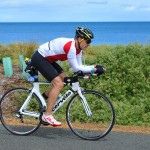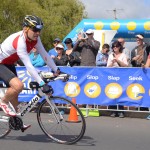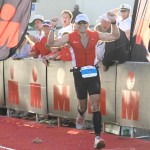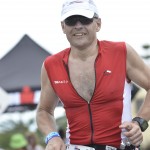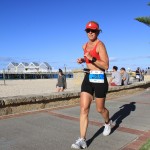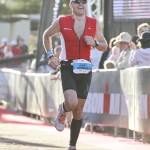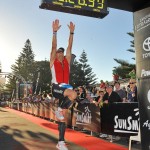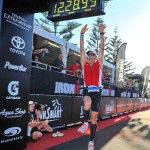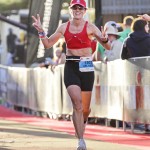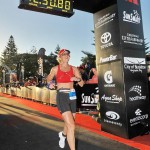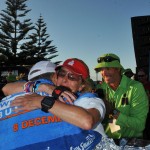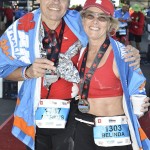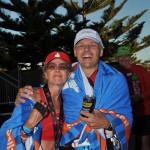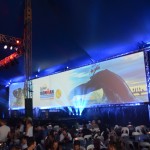Am 8. Dezember war es endlich soweit: Nach 7 Monaten Vorbereitung fiel am Ironman Western Australia (IMWA) der Startschuss zu meinem bisher längsten Rennen über die Ironman-Distanz.
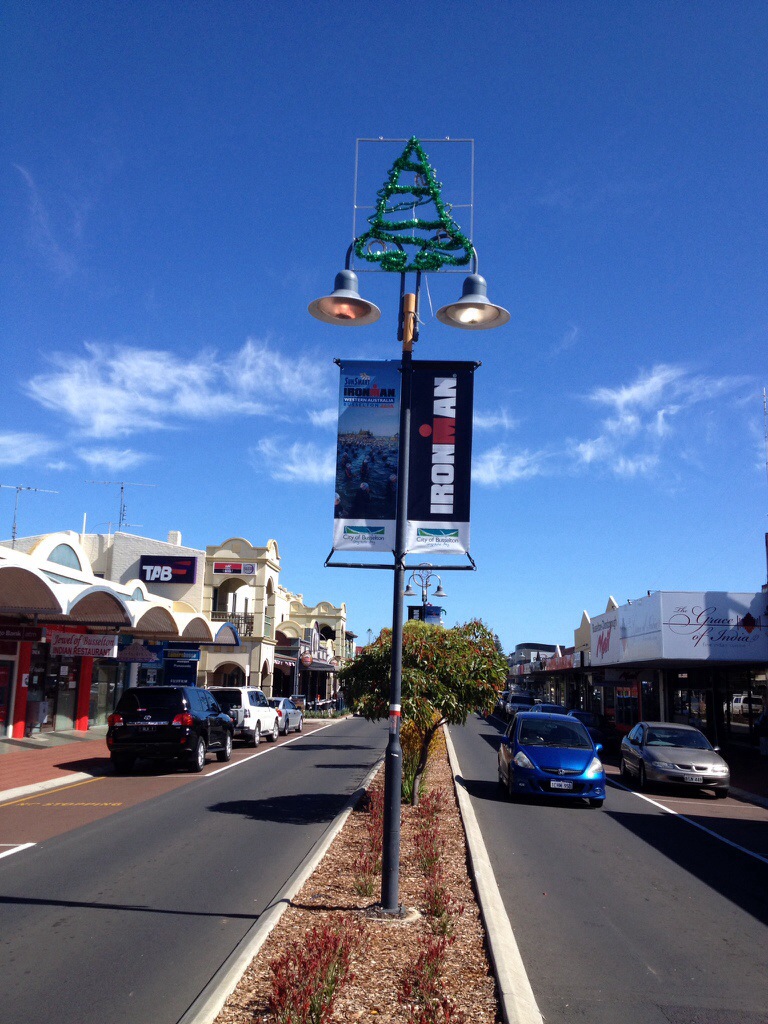
Vor dem Start
In der Woche vor dem Start in welcher wir bereits in Busselton waren, machten wir uns mit der Umgebung, Klima, Zeitzone, Wind und Temperaturen vertraut. Letztere hatte ich anders erwartet und die wenigen gepackten warmen Kleider wurden sehr wichtig! Anstelle der heissen Sommertemperaturen betrugen die Morgentemperaturen in den ersten zwei Tagen jeweils knapp 10°C. Im Jahr zuvor waren am IMWA mit Temperaturen von 35°C leicht andere Voraussetzungen…
Wegen einem Hai-Alarm war der Strand beim Busselton Jetty (= Schwimmstart) am Montag geschlossen. Diese Warnung wurde zum Glück nach einem Tag wieder aufgehoben. Somit stand auch aus dieser Perspektive nichts mehr im Weg für den Start am Sonntag.
8. Dezember 2013, Race day
Um 3 Uhr ging der Wecker los. Der letzte Countdown zum Start um 05:45 Uhr hat begonnen. Nach dem Frühstück noch ein letzter Check ob der Chip sitzt, die Uhr bereit ist, etc. Danach ging es von unserer Unterkunft die Strecke von ca 400 m zur Wechselzone. Diese kurze Distanz war vor und nach dem Rennen definitiv ein grosser Vorteil!
Das Wetter zeigte sich ebenfalls von der besten Seite: Die Temperaturen waren für maximal 24°C prognostiziert. Am morgen hatte es so gut wie kein Wind. Dieser sollte erst gegen Mittag einsetzen. Somit herrschten die besten Voraussetzungen von dieser Seite!
Da die Profis um 05:30 und 05:35 Uhr starteten, blieb uns nur 10 Minuten Zeit um in’s Startgelände zu gelangen und einzuschwimmen. Das genügte jedoch problemlos. – Und so stand ich also am Start meines ersten Ironman. Da neben mir noch ca 1600 andere Teilnehmer starteten, nahm ich mir vor, aussen rechts zu schwimmen. Damit wollte ich sicherstellen, dass ich nicht eingeklemmt werde und von möglichst wenig “Querschwimmern” beeinträchtig werde. Der Start verlief bestens. Ich konnte mein Plan bestens umsetzen und fand schnell meinen Rhythmus. Beim Wendepunkt bei 1,9 km gab es den vorauszusehenden Effekt, dass jeder möglichst nahe an den total 3 Wendebojen vorbei schwimmen will. Die rund 5 Minuten im Bereich der Wendeboje waren dann auch anstrengend und unruhig. Kurz darauf ging das Feld aber wieder in die Breite und ich hatte wieder genügend Platz um die zweite Hälfte in Angriff zu nehmen. Nach einer Stunde und 16 Minuten war ich bereits wieder aus dem Wasser, 4 Minuten schneller als erwartet. Praktisch gleichzeitig hatte auch Belinda das Schwimmen absolviert.
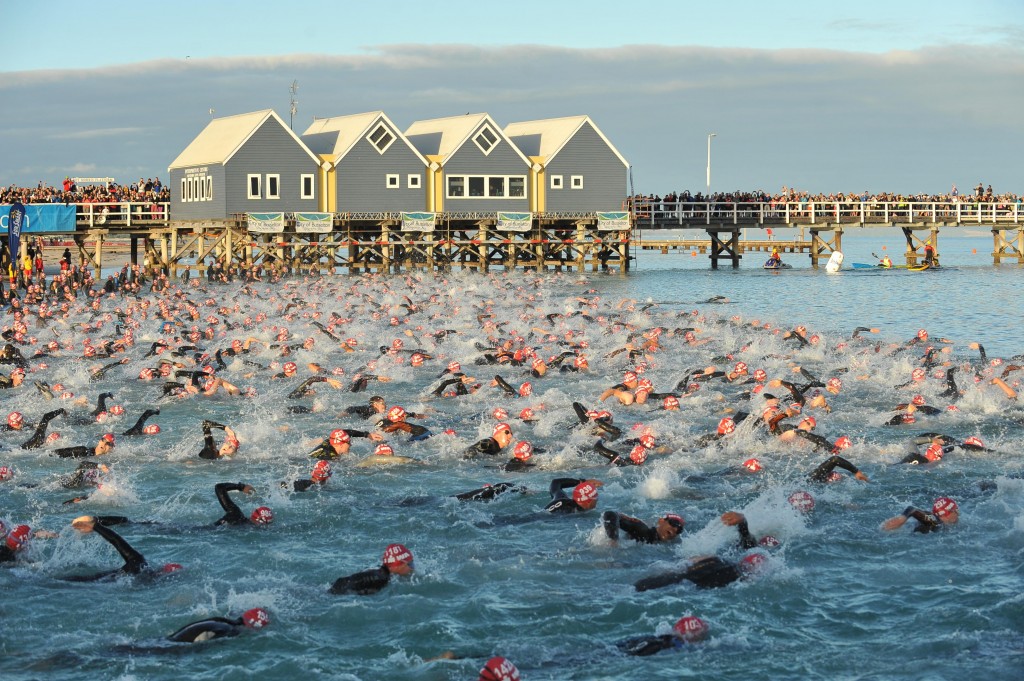
Die Bike-Strecke von 180 km ist in 3 Runden à 60 km aufgeteilt und flach. Ich hatte mir vorgenommen, die ersten 120 km defensiv, die letzten 60 km leicht schneller zu fahren. Dieser Plan ging perfekt auf. Die dritte und letzte Runde war darum in mehreren Aspekten die schönste: Dank dem erhöhtem Tempo machte ich sehr viele Plätze vorwärts und wurde dabei lediglich von einer einzigen Person überholt. Für dieses Finale hatte zusätzlich auch noch der Wind eingesetzt. Am meisten spürte ich dies als ich zum ersten Wendepunkt entlang der Küste fuhr: Mit 42 km/h düste ich auf die Wende zu um nach der 180° Wende mit gemächlichen 24 km/h gegen den Wind zu kämpfen… – Erleichtert erreichte ich in 5:57 die Wechselzone, womit ich auch mein zweites Ziel, die Bike-Strecke unter 6 Stunden erreichte.
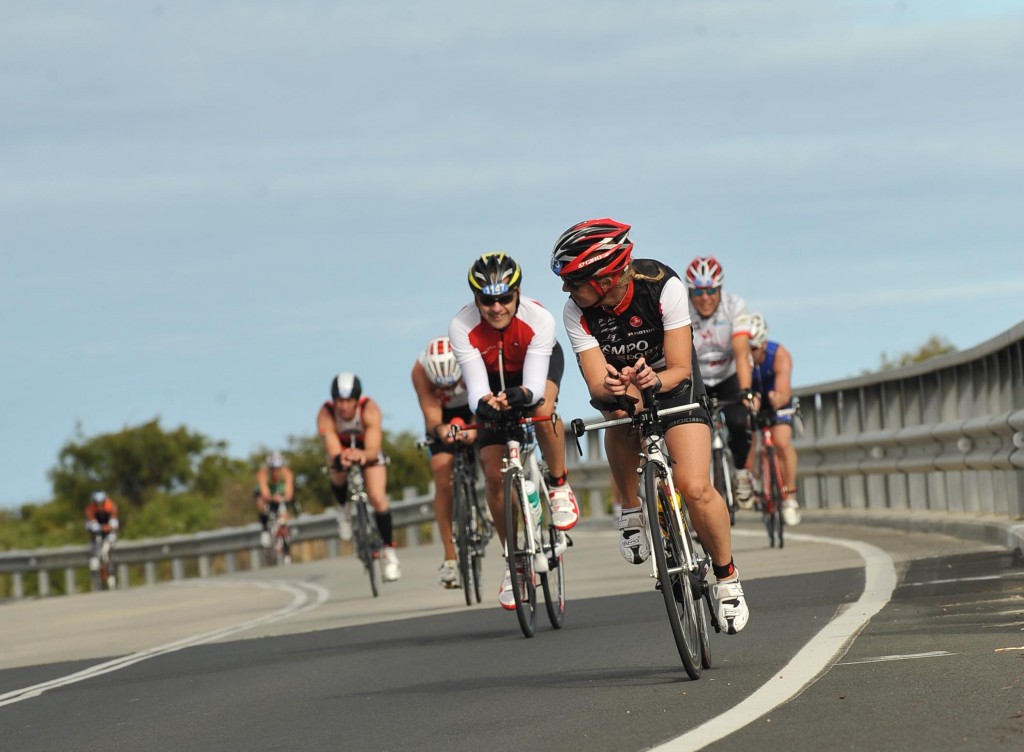
Ich war gespannt, wie ich den Marathon starten werde und wie sich die 42 km nach einem über 7-stündigen Aufwärmen anfühlen wird. Der Start verlief sehr gut und ich fühlte mich bestens. Die vielen Koppeltrainings über die letzten 7 Monate haben sich sehr positiv ausgewirkt. Danke Coach! Mit der Verpflegung (alle 30 Minuten ein Gel) musste ich vom Plan abweichen: Die Einnahme der Gels war im Lauf unangenehm. Diese fühlten sich für mich im Mund “trocken” an. So musste ich auf das Angebot der vielen Verpflegungsposten des Veranstalters “ausweichen”. Dabei gab es für uns Europäer auch ungewohnte Angebote: Jelly Beans, Vegemite oder Wasser-Melonen hatte ich auf Europäischen Triathlons noch nie gesehen. Da ich Wassermelonen sehr gerne habe, versuchte ich mich damit zu verpflegen. Mein Magen hatte damit keine Probleme.
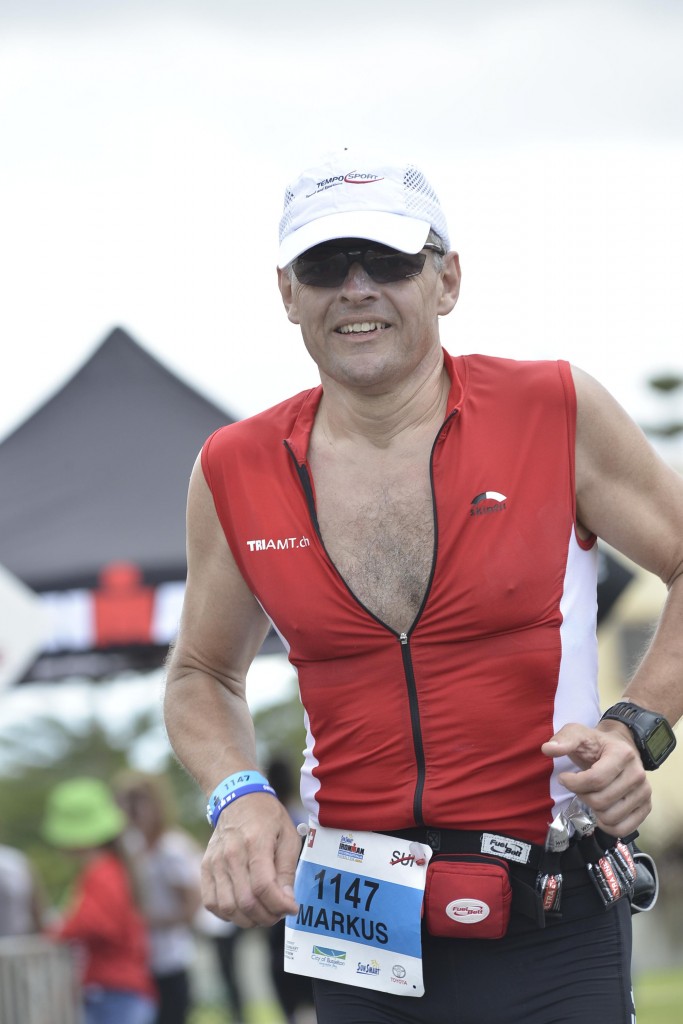
Bei Kilometer 30 musste ich meine Geschwindigkeit abrupt reduzieren: Eine riesige Blase war an meiner kleinen linken Zehe geplatzt. Der nächste Sanitätsposten war nur einige hundert Meter entfernt. Dort angekommen musste ich 2-3 Minuten warten, bis der Arzt wieder zurück war und sich meiner Zehen annehmen konnte. In dieser Wartezeit konnte ich wenigstens meine Schuhe ausziehen und mich am Verpflegungsposten nebenan in Ruhe mit Wassermelonen verköstigen. – Die geplatzte Blase war schnell verbunden. Auch die rechte kleine Zehe, welche bereits bedrohlich angeschwollen war, hatte der Arzt ebenfalls mit Pflaster geschützt. So konnte ich nach ca 8 Minuten Unterbruch wieder auf die Laufstrecke um die letzten 10 km in Angriff zu nehmen. Erfreulicherweise war ich sehr schnell wieder im Rennen. Die Blase war schnell vergessen und ich fühlte mich sehr gut und erstaunlicherweise frisch. So war auch die letzte Runde im Lauf davon geprägt, dass ich viele Läufer überholen konnte. Das war ein beflügelndes Erlebnis! 3 km vor dem Ziel platzte dann auch noch die Blase an der rechten Zehe. Da diese bereits mit Pflaster geschützt war, verzichtete ich auf einen weiteren Stop, denn ich hatte nur noch eines im Sinn: Die Ziellinie nach total 226 km mit einem grossen Freudensprung zu überqueren. Dort wurde ich nach 12 Stunden und 28 Minuten mit den obligaten Worten “Markus, You are an Ironman” begrüsst. Ich war sehr glücklich, dass ich meinen ersten Ironman erfolgreich und ohne nennenswerte Probleme finishen konnte. Dass ich auch alle meine Zeitvorstellungen unterbieten konnte war ebenfalls eine grosse Befriedigung.
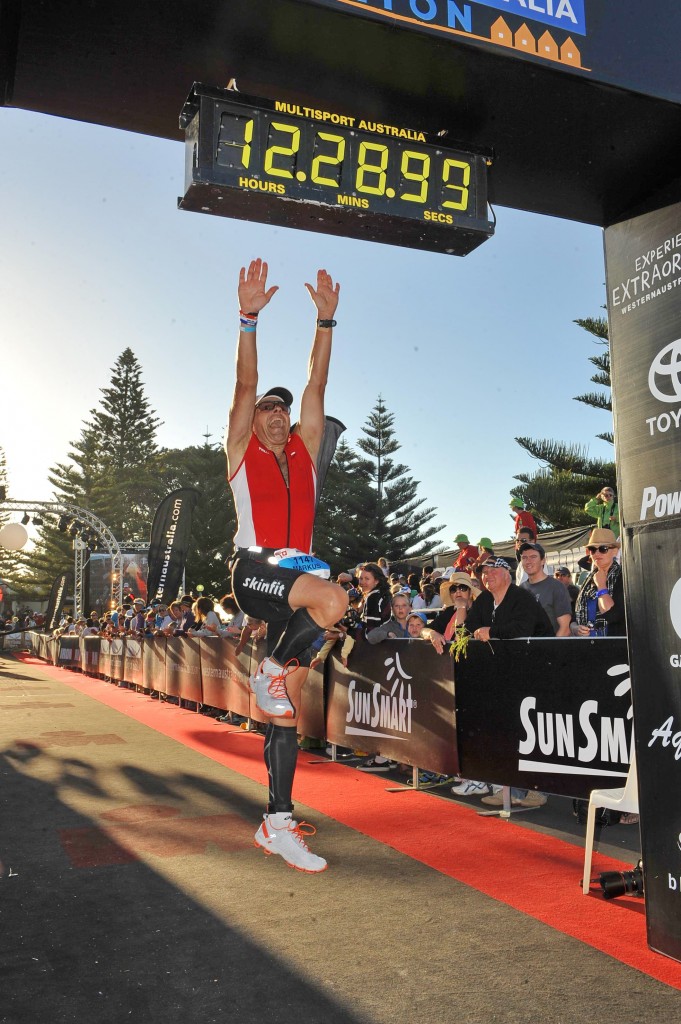
Auch Belinda verlief das Race sehr gut. Sie konnte ihren 5. Ironman ohne Zwischenfälle mit einer neuen Personal Best Zeit abschliessen. – Im Ziel überraschte ich Belinda mit einem Heiratsantrag. Die Strapazen der letzten 12 Stunden waren sofort vergessen und sie antwortete mit einem klaren JA. Durch den grossen Applaus der Zuschauer und Volunteers kam es uns vor, als ob wir den Ironman gewonnen hätten! Die Volunteers wollten uns zu diesem Ereignis spontan Champagner anbieten. Leider gab es aber nur Wasser, Gatorade und andere Softdrinks. Das war auch besser so, denn der Champagner wäre uns nach diesem 12-stündigen Sonntagsausflug nicht gut bekommen…
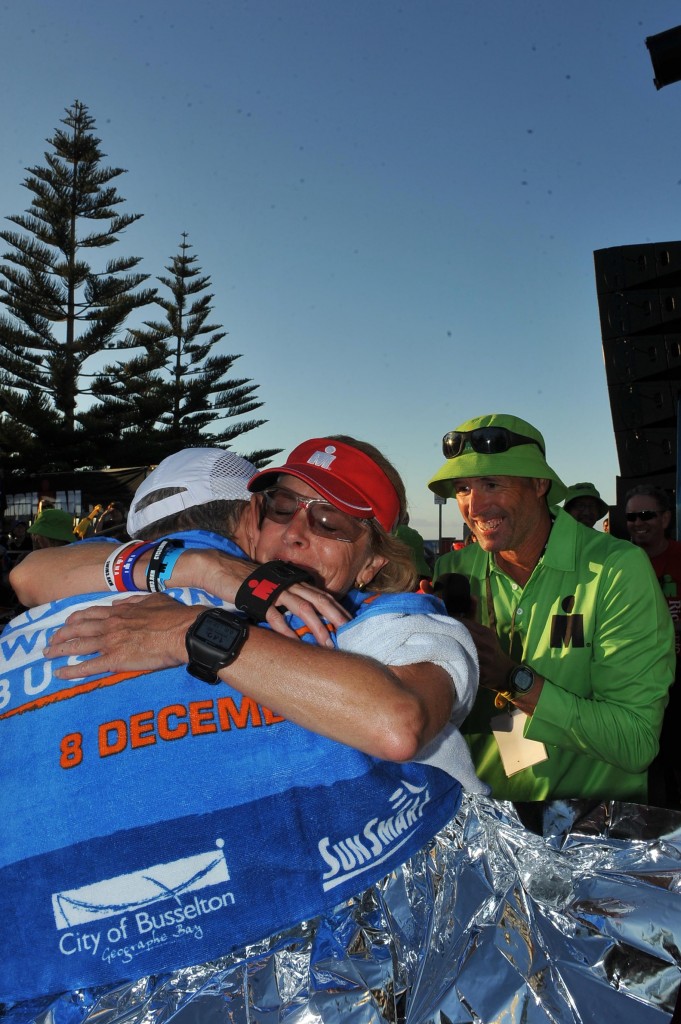
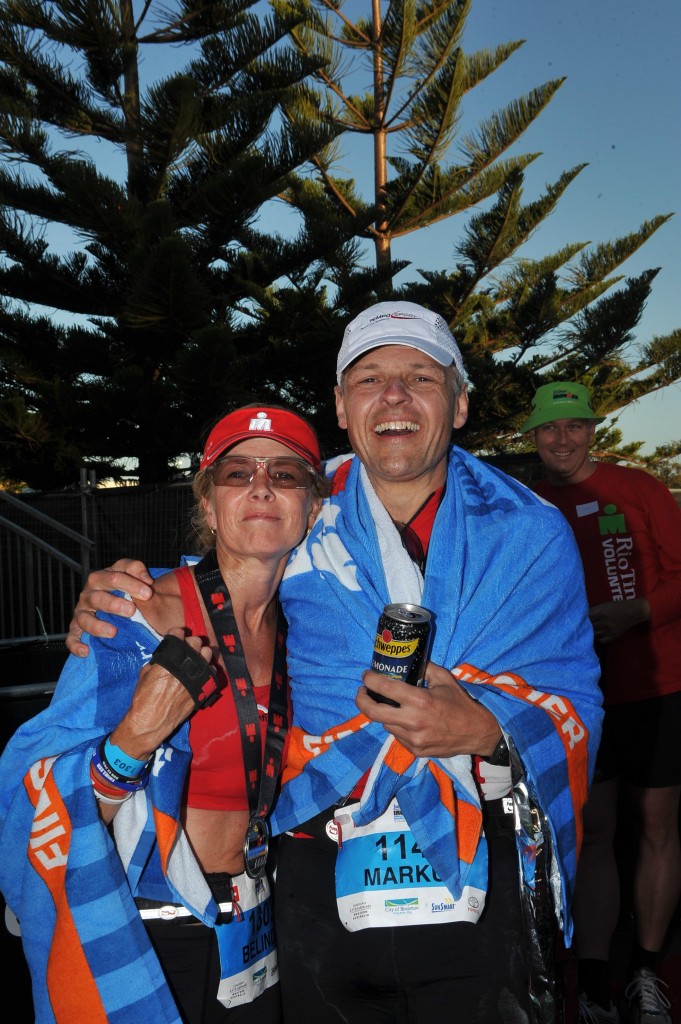
Der Tag nach dem Rennen
Belinda und ich hatten uns beide sehr gut erholt. Wir hatten keine nennenswerte Schmerzen. Einzig meine Zehen weigerten sich, bereits wieder in Schuhe eingepackt zu werden.
Am Montag Abend wurde der Abschluss mit dem Award Dinner gefeiert. Wie bereits die Welcome Party am Freitag war auch der Abschluss perfekt organisiert. Da können sich die europäischen Organisatoren ein Vorbild nehmen.
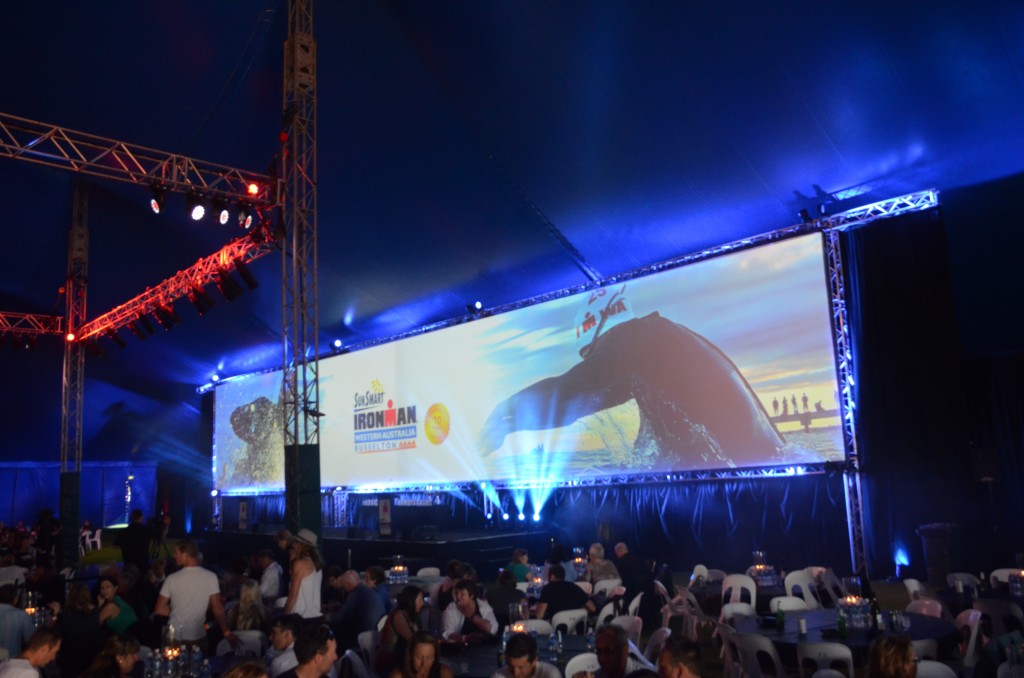
In der Zwischenzeit sind wir bereits wieder zurück in der kalten Schweiz. A propos Temperaturen: Die Temperaturen in Perth waren eine Woche nach unserem Wettkampf mit 42°C etwas wärmer als die 24°C vom 8. Dezember…
Mehr Fotos
Like this:
Like Loading...

